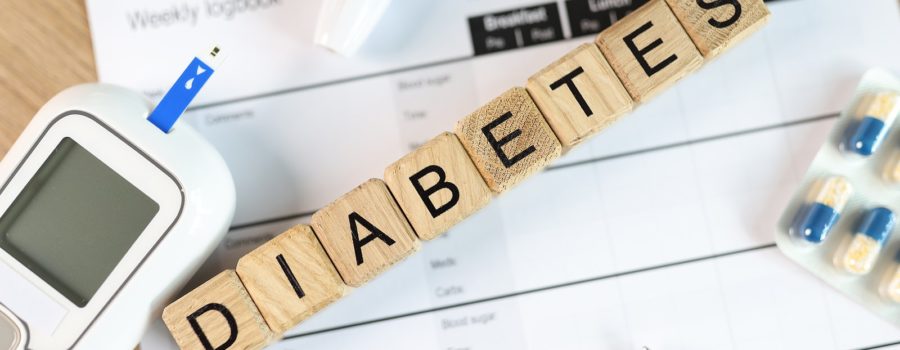More than 3 million Canadians live with a diagnosis of type 1 or type 2 diabetes. When everyone you know has diabetes; it may be easy to forget the devastating consequences of this disease. Understanding this condition, its symptoms, and treatment strategies is the cornerstone of living well with diabetes.
DIABETES TYPES 1, 2 … AND 3C?
Our bodies get glucose from most foods in the diet (even broccoli) and circulate it through the bloodstream. Insulin, produced by the pancreas, escorts sugar into the cells, nourishing them and enabling our survival. If insulin is unavailable or ineffective, blood sugar levels escalate, leading to a diagnosis of diabetes.
In type 1 diabetes, an autoimmune attack on the pancreas damages the insulin-producing beta cells, preventing insulin production. Surgeries or diseases such as cystic fibrosis and pancreatitis can also destroy beta cells, causing the lesser-known type 3c diabetes. People with type 1 or 3c diabetes rely on life-saving insulin injections for survival.
By contrast, insulin is abundant in type 2 diabetes but blood sugar levels skyrocket nevertheless. The culprit? Insulin resistance. In this metabolic state, the body’s cells cannot respond to insulin signalling, leaving glucose stranded in the blood. Treatment of type 2 diabetes aims to improve the body’s response to insulin.
HOW DO WE GET DIABETES?
The precise cause of type 1 diabetes is unknown. It is an autoimmune condition often found in childhood, although a variant known as latent autoimmune diabetes in adults (LADA) can appear after age 35. Type 1 diabetes is genetic and is less common in countries near the equator, suggesting influences from environment and vitamin D.
Insulin resistance characterizing type 2 diabetes can be caused by obesity, poor nutrition, inactivity, and advancing age, although hormonal conditions and medications can contribute. The term “adult onset” was previously used to describe this type, but with the childhood obesity epidemic, insulin resistance and diabetes are appearing much earlier in life.
PREDIABETES AND INSULIN RESISTANCE
The body’s insulin response can be compromised for years before blood sugar levels rise into the danger zone. Slight elevations in blood sugar, called “prediabetes” can be the first warning sign.
Dr. Tara Andresen, ND, is even more proactive, sometimes detecting insulin resistance in her patients before blood sugar levels change at all. “Simple tests can highlight insulin and glucose dysregulation early on,” she explains. Correcting insulin resistance may prevent diabetes from starting in the first place.
IS SUGAR REALLY THAT BAD?
Although sweets and processed foods may seem harmless, high blood levels are anything but benign. Glucose binds to cells, causing extensive damage to the cardiovascular system, hardening arteries, and depriving vital organs of blood. People with all forms of diabetes have cardiovascular disease, kidney and liver failure, blindness, and even amputation more often than nondiabetics.
Surgeries, infections, and dental procedures are more complicated for diabetics, as glucose slows wound healing and suppresses immunity. Nerve damage from high sugar levels cause digestive problems and painful numbness and tingling in the feet, while also decimating sexual function. Sadly, sugar really is that bad.
TREATMENTS FOR DIABETES
The goal for all diabetics is to control blood sugar levels. Doing so may soften the impact of life-altering complications.
To manage sugars, type 1 diabetics replace the insulin their bodies no longer make, although some people may receive islet-cell transplantation to restore insulin production. Insulin is injected several times per day or through a continuous insulin pump.
Exercise, illness, surgery, or even delayed meals can change blood sugar levels dramatically, requiring constant vigilance of glucose levels and insulin dosing. Using too much or too little insulin can create a life-threatening health crisis in moments.
In type 2 diabetes, blood sugar levels are reduced by restoring sensitivity to insulin. Diabeteic of all persuasions can benefit from appropriate weight maintenance while reducing dietary sugar and eating whole foods that are high in fibre and plant content.
Regular exercise, even a daily walk, can curb blood sugar surges, especially if done after eating. Be sure to advise your prescriber if you make big changes, in case medications need adjusting.
Supplements, including berberine and inositol, may promote insulin sensitivity quite effectively, but as Andresen says, “the most profound, healing impacts come from focused lifestyle changes,” Weight loss, a healthy diet, and exercise can put type 2 diabetes into remission.
PROACTIVE MEASURES FOR ALL DIABETICS
Staying informed about your body will also help prevent serious complications. See your health professional regularly for cardiac, kidney, and blood sugar testing and have annual eye exams.
Check your feet for wounds, and ingrown toenails to prevent infections, and protect your heart and kidneys from additional harms by reducing salt and smoking. Notice how stress affects your blood sugar levels and blood pressure.
Diabetes is a common yet potentially devastating disease, especially if undiagnosed or undermanaged. Eating well, exercising, managing stress, and maintaining optimal weight can protect diabetic people from serious health problems.
DIAGNOSING DIABETES
Three classic symptoms are associated with all forms of diabetes:
- Increased thirst
- Increased hunger
- Increased urination
Fatigue, irritability, and blurred vision are additional warning signs.
Unintentional weight loss can herald a type 1 diagnosis, and symptoms can come on very quickly.
Symptoms in type 2 come on more slowly and can include frequent infections, slow wound healing, and tingling in extremities.
Diabetes may also have no symptoms at all. Consider periodic blood testing with your health care practitioner, especially if you are at increased risk.
Flower, Gillian. “Sugar Sabotage.” Alive , Nov. 2023, pp. 21–23.




